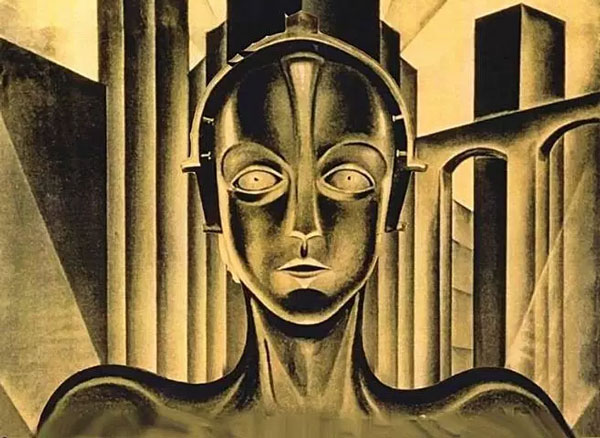Metropolis - 'the mother of sci-fi cinema' 90 years on
Posted on: 9 November 2017 by Andrew Plowman in 2017 posts

As human beings, we are always fascinated by the future - and Metropolis is the original and perhaps greatest film about a city of the future.
Fritz Lang, the director, claimed that he had originally been inspired by a visit to New York.
We can see the influence of 'Metropolis' on so many recent films, from Ridley Scott’s original 'Blade Runner' (1982), through Luc Besson’s 'The Fifth Element' (1997) to 'Blade Runner 2049' (2017), directed by Denis Villeneuve.
That goes not only for the portrayal of the city, with its contrasts between the idyllic gardens of the rulers of Metropolis and the dark crowded spaces inhabited by the workers. It is also true of elements of the plot – with robots running riot and inspiring mutiny – that are still so much part of science-fiction film making in our time.
Before digital effects - mirrors and models
This year is the 90th anniversary of the release of 'Metropolis', which is an important film for many reasons and is a key resource for students studying film at Liverpool. Innovative production techniques were developed especially for the film. The most famous was the ‘Schüfftan Technique’, named after the cinematographer Eugen Schüfftan. This technique features in the opening shots of the stadium in the city of Metropolis among others. It uses mirrors and models to create the effect of huge sets. It became a standard technique at least until the arrival of digital effects.
The film is also a fascinating document of the rivalry between the German film industry and Hollywood in the silent film era. In the 1920s, the German film industry was Hollywood’s major rival, though it was in financial difficulty. The Hollywood studios Paramount and Metro-Goldwyn used this fact to enter into a financial arrangement with the German studios Ufa in the so-called ‘Parufamet agreement’, which became hugely significant for 'Metropolis'.
Lights, camera, action
Designed to showcase the strengths of German film-making, 'Metropolis' features amazing sets, lighting, and camera trickery. Under the Parafumet Agreement, Hollywood editors had the right to reedit films, and the team under Channing Pollock at Paramount cut out a lot of material in the effort to produce a more ‘American’ version with a stronger emphasis on the plot and on the film’s stars. As a result, a lot of footage was lost and as recently as 2008 missing scenes were discovered in a film archive in Argentina!
Concerns about the introduction of American management and working techniques (e.g. Taylorism and Fordism) into Germany, are also reflected in the fim. It highlights the social tensions between left and right in Weimar Germany. At the time, some reviewers on the right felt the film’s story of a workers’ mutiny was too left wing, while reviewers on the left felt that the agreement between workers and bosses at the end was too conservative.
I think what makes 'Metropolis' so special is that it reflects the time when it was made but in a way that speaks to us powerfully today.
Find out more
- Find out more about studying film at Liverpool
Keywords: Film studies, Metropolis, Modern Languages and Cultures, German, University, Liverpool, Film, Blade Runner.